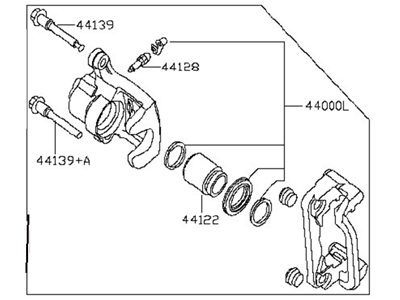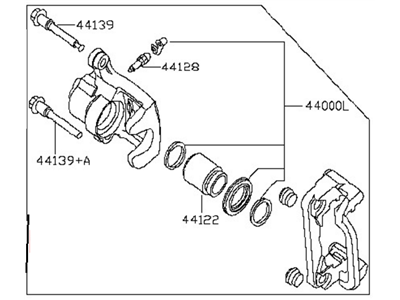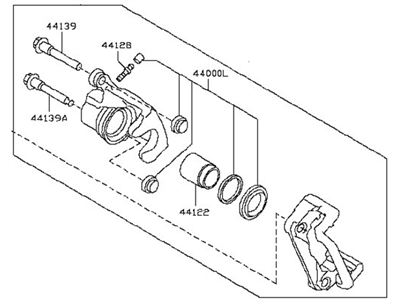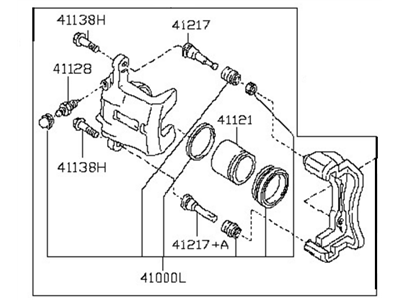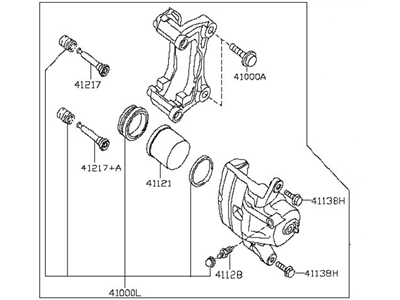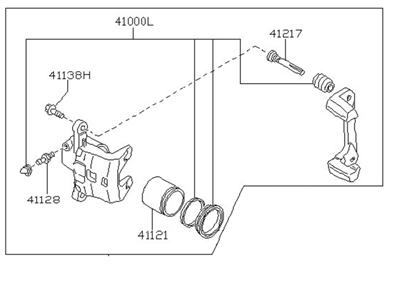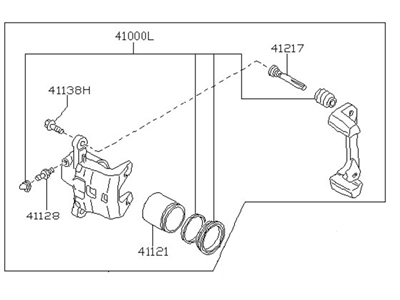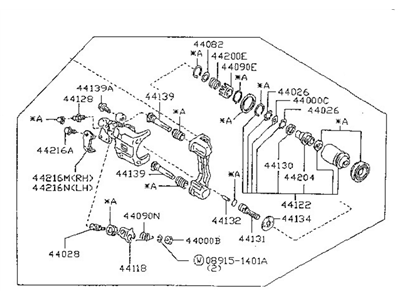×
- Hello
- Login or Register
- Quick Links
- Live Chat
- Track Order
- Parts Availability
- RMA
- Help Center
- Contact Us
- Shop for
- Nissan Parts
- Nissan Accessories

My Garage
My Account
Cart
Genuine Nissan Sentra Brake Caliper
Caliper- Select Vehicle by Model
- Select Vehicle by VIN
Select Vehicle by Model
orMake
Model
Year
Select Vehicle by VIN
For the most accurate results, select vehicle by your VIN (Vehicle Identification Number).
94 Brake Calipers found
Nissan Sentra Caliper Assy-Rear RH,W/O Pad & Shim
Part Number: 44001-6LA0B$376.89 MSRP: $572.98You Save: $196.09 (35%)Ships in 1-3 Business DaysNissan Sentra CALIPER ASSY-FRONT RH,W/O PAD & SHIM
Part Number: 41001-6LE1A$379.08 MSRP: $576.33You Save: $197.25 (35%)Ships in 1-3 Business DaysNissan Sentra Caliper Assy-Rear LH,W/O Pad & Shim
Part Number: 44011-6LA0B$380.39 MSRP: $578.33You Save: $197.94 (35%)Ships in 1-3 Business DaysNissan Sentra A CALIPER RH 99
Part Number: 44001-EM11A$270.64 MSRP: $324.60You Save: $53.96 (17%)Ships in 1-2 Business DaysNissan Sentra Brake-Rear LH
Part Number: 44011-EM11A$304.19 MSRP: $324.60You Save: $20.41 (7%)Ships in 1-2 Business DaysNissan Sentra Brake-Rear LH
Part Number: 44011-1KD0A$279.41 MSRP: $424.20You Save: $144.79 (35%)Ships in 1-3 Business DaysNissan Sentra CALIPER Assembly-Rear RH,W/O Pads Or SHIMS
Part Number: 44001-1KD0A$279.41 MSRP: $424.20You Save: $144.79 (35%)Ships in 1-3 Business DaysNissan Sentra CALIPER ASSY-FRONT LH,W/O PAD & SHIM
Part Number: 41011-6LE1A$379.08 MSRP: $576.33You Save: $197.25 (35%)Ships in 1-3 Business DaysNissan Sentra CALIPER Assembly-Front RH,W/O Pads Or SHIMS
Part Number: 41001-ET000$355.46 MSRP: $499.98You Save: $144.52 (29%)Nissan Sentra CALIPER Assembly-Front RH, W/O Pads Or SHIMS
Part Number: 41001-ET00A$355.46 MSRP: $499.98You Save: $144.52 (29%)Nissan Sentra CALIPER Assembly-Front RH,W/O Pad & SHIM
Part Number: 41001-3SG0B$264.46 MSRP: $401.40You Save: $136.94 (35%)Ships in 1-3 Business DaysNissan Sentra CALIPER Assembly-Front RH, W/O Pads Or SHIMS
Part Number: 41001-3SG0C$264.46 MSRP: $401.40You Save: $136.94 (35%)Ships in 1-3 Business Days
| Page 1 of 5 |Next >
1-20 of 94 Results
Nissan Sentra Brake Caliper
If you need any OEM Nissan Sentra Brake Caliper, feel free to choose them out of our huge selection of genuine Nissan Sentra Brake Caliper. All our parts are offered at unbeatable prices and are supported by the manufacturer's warranty. In addition, we offer quick shipping to have your parts delivered to your door step in a matter of days.
Nissan Sentra Brake Caliper Parts Questions & Experts Answers
- Q: How to replace calipers on Nissan Sentra?A:If replacement is indicated, usually because of fluid leakage, it is recommended that the calipers be replaced, not overhauled. New and factory rebuilt units are available on an exchange basis, which makes this job quite easy. Always replace the calipers in pairs never replace just one of them. To remove, first loosen the front or rear wheel lug nuts, raise the front or rear of the vehicle and place it securely on jackstands. Block the wheels at the opposite end. Remove the front or rear wheel. Then, remove the banjo bolt. Don't remove the brake hose banjo bolt unless the caliper or hose requires service. Disconnect the brake hose from the caliper and discard the sealing washers. New ones should be used on installation. Plug the brake hose to keep contaminants out of the brake system and to prevent losing any more brake fluid than is necessary. Using a piece of rubber hose of the appropriate size, plug the Brake Line. Remove the caliper mounting bolts and lift the caliper from its bracket. Installation is the reverse of removal. Tighten the caliper mounting bolt to the torque and the wheel lug nuts to the torque. Use new sealing washers for the brake hose-to-caliper banjo bolt. Bleed the brake system. Make sure there are no leaks from the hose connections. Test the brakes carefully before returning the vehicle to normal service.
Related Nissan Sentra Parts
Browse by Year
2024 Brake Caliper 2023 Brake Caliper 2022 Brake Caliper 2021 Brake Caliper 2020 Brake Caliper 2019 Brake Caliper 2018 Brake Caliper 2017 Brake Caliper 2016 Brake Caliper 2015 Brake Caliper 2014 Brake Caliper 2013 Brake Caliper 2012 Brake Caliper 2011 Brake Caliper 2010 Brake Caliper 2009 Brake Caliper 2008 Brake Caliper 2007 Brake Caliper 2006 Brake Caliper 2005 Brake Caliper 2004 Brake Caliper 2003 Brake Caliper 2002 Brake Caliper 2001 Brake Caliper 2000 Brake Caliper 1999 Brake Caliper 1998 Brake Caliper 1997 Brake Caliper 1996 Brake Caliper 1995 Brake Caliper 1994 Brake Caliper 1993 Brake Caliper 1992 Brake Caliper 1991 Brake Caliper 1990 Brake Caliper 1989 Brake Caliper 1988 Brake Caliper 1987 Brake Caliper 1986 Brake Caliper 1985 Brake Caliper 1984 Brake Caliper 1983 Brake Caliper 1982 Brake Caliper




